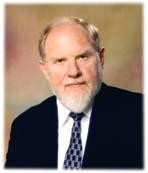Over the past thirty years maintenance has changed perhaps more so than any other management discipline. The changes are due to an increase in the number and variety of physical assets, their complexity and our changing views on maintenance organization and responsibilities. A key contributor to our response to the changing world of maintenance was the work done by Nowlan and Heap in their development of RCM, Reliability-centred Maintenance.
Nowlan and Heap
Early maintenance programs were based on the premise that every asset had a life. Therefore periodic overhauls were essential to sustain performance and reliability. By the early 1960s with the introduction of the 747, DC-10 and L-1011, airlines came to the conclusion that current maintenance philosophies were unsustainable. In response, the FAA and the commercial aviation industry formed a group to study the current preventive maintenance approach. Their research indicated that in many cases overhauls had little or no effect on overall reliability and safety and in fact statistical analysis showed, in most cases, no change in safety or reliability when overhaul intervals changed. They also discovered that the initial overhaul intervals were not analytically based. Also, reducing the overhaul periods increased repair costs with little to no benefits. In reality, changing parts too early consumed component life and re-introduced infant mortality failures.
In 1978, based on the commercial aviation research, Nowlan and Heap wrote a report for the US National Defense in which the term RCM was first coined. Unfortunately Howard Heap passed away shortly following this pivotal work.
RCM2 and John Moubray
Stan Nowlan continued his research and in 1983 started his collaboration with John Moubray to adapt RCM to industry. This gave rise to RCM2™ (RCMII™), The Aladon Network and John Moubray’s book Reliability-Centred Maintenance (RCMII). RCM2 is defined as a process used to determine what must be done to ensure that any physical asset continues to do what its users want it to do in its present operation context. The goal of RCM2 is consequence mitigation rather than failure avoidance and is based on seven questions.
Public Standard JA-1011 & JA-1012
In 1999 the Society of Automotive Engineering introduced a standard (JA-1011, and later JA-1012) to define the criteria a method must comply with in order to be called RCM. John Moubray’s book is a key reference and RCM2 fully complies with the standard.
The Legacy of John Moubray
 John passed away in 2004 leaving a rich heritage to industry and a strong Network following. Through a collaboration of the members of the Aladon Network the network continues to foster the work started by Nowlan, Heap and Moubray.
John passed away in 2004 leaving a rich heritage to industry and a strong Network following. Through a collaboration of the members of the Aladon Network the network continues to foster the work started by Nowlan, Heap and Moubray.
AXYS will be running a second RCM2 3 Day Introductory Course in Sydney on November…
AXYS will be running an RCM2 3 Day Introductory Course in Sydney on November 6th,…